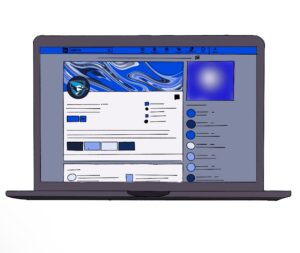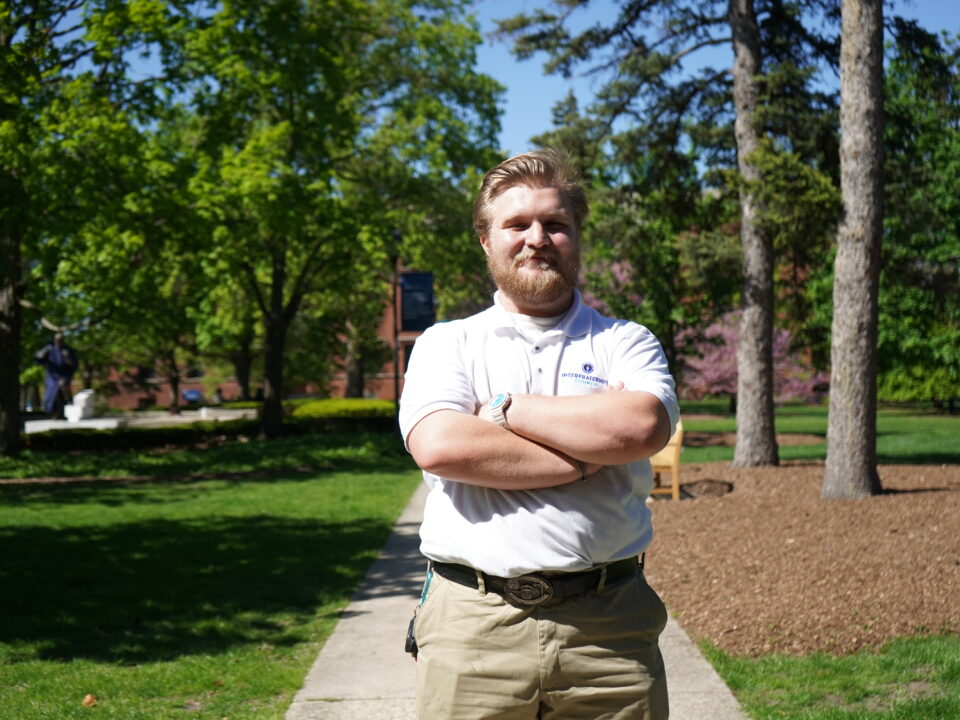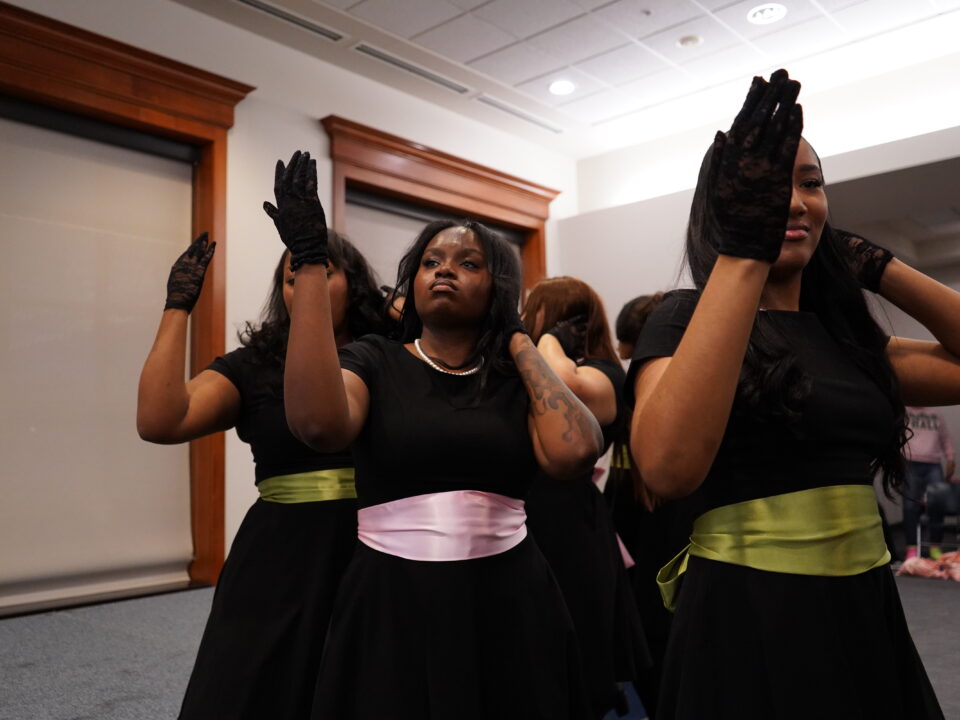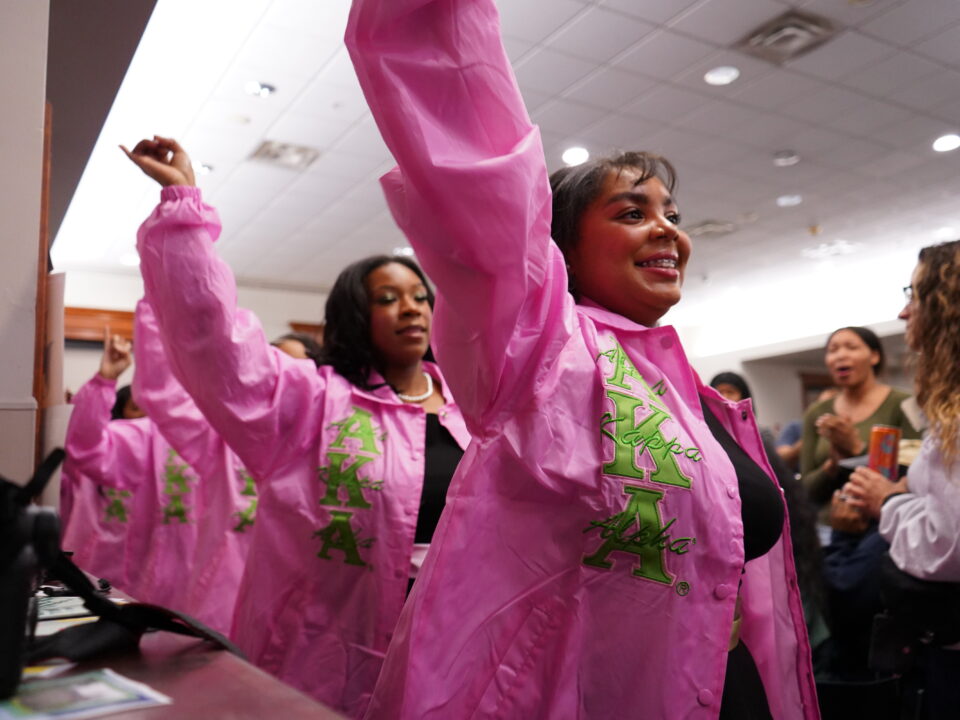LinkedIn has changed the networking game


Graphic by — Rachel Fratt
May is quickly approaching, and with that comes the search for internships and the push for graduating seniors to get full-time jobs. With this push comes the cashing in on networks students have built, which is something often done through the social media platform LinkedIn.
LinkedIn is approaching its 19th birthday, founded in May of 2003, in California. The platform is used to create professional networks, advertise job skills to employers, and advertise jobs to potential employees.
LinkedIn claims a base of over 800 million individuals in over 200 countries and territories, and it has certainly changed the networking game.
“My philosophy for using LinkedIn, specifically with those recruiters and companies who post jobs on LinkedIn, is as in addition to doing the legwork of networking via email, phone calls and ‘cups of coffee,’” said President of George Washington Street Partners, Ingrid Becton in an email to The Leader.
“I unusually suggest that for every hour one spends applying for jobs on LinkedIn, two hours should be spent doing the one-to-one connections. That being said, I also encourage my clients to see who my connections are and if they want to be connected, I can make an introduction which could lead to the aforementioned.”
Becton held a seminar at Elmhurst University on April 12, informing attendees on how to use LinkedIn when searching for jobs and internships.
“If you don’t have a good LinkedIn page, don’t put it on your resume,” said Becton at the seminar.
What are the tips to making a good LinkedIn page? According to Becton, it’s a presentable profile photo, a cover photo that ties to your career, and a frequently updated list of jobs and internships.
“When someone does an ‘About’ section and does a deep and thorough description of what they do and who they are — and lists volunteer experiences, recommendations, and interests — potential employers can see what a candidate stands for and what matters,” said Becton.
“Additionally, as a candidate, you can go and look at a company or specific employee’s LinkedIn page to get a snapshot of who they are and what they also find important. Provided they have really done a thorough LinkedIn page.”
The LinkedIn seminar was a chance for individuals to create and expand their own profiles, hoping to create connections for future job prospects.
“No matter where you are in your career, like, LinkedIn has value,” said Steven Bumpus, an Iowa State University graduate who attended the seminar. “I like my company, I like where I’m at right now, but if at some point I want to leave I know I want to have this as a useful resource.”
“So, as a sophomore in college, I was really looking for ways to get my name out there and I heard there was a LinkedIn workshop, and I was like ‘that’s a great way to put my name out there,’” said Kevin Dixon, a sophomore at North Central College who also attended the seminar.
“I’m not a very organized person, so this is a really great way for me to stay organized just to see who I contacted, and, like, I can constantly make changes to my profile, which is really good. ‘Cause I don’t really do much with my resume, so this would be a great way for me to stay organized,” said Dixon.
Becton helped guide individuals through the process of starting their own pages, one student commented during the session “It’s overwhelming,” saying that there were so many little details to add into one’s profile. However, according to Becton, LinkedIn profile benefits are numerous.
“I have 1644 connections and I use LinkedIn to stay connected with professionals from my past and current work, and also to connect my clients with individuals who may be able to do an informational interview with them. Additionally, I write articles regarding my coaching business, philosophy, and issues that I find important, and speak to who I like to work with,” said Becton.
“I also use it to do research on who I may know in certain companies so I can connect with them or have my clients connect with them. It’s a safe and interesting way to explore companies, cultures of companies, and the demographics of folks that are working for specific companies. It also keeps me up to date on what my clients and colleagues and friends are up to in a professional way.”
Professor Thomas Salek, assistant professor of communications at EU, also teaches students different ways of using LinkedIn. He provided insights to The Leader about how LinkedIn can assist in networking and adding more details than a resume can provide, such as a photo and social capital.
“Earlier resumes you had to send it out, it was a document that was, just, a very personal one. LinkedIn it’s a public profile that, you know, houses your resume. And so, the advantage of it is it demonstrates social capital. This idea of how we make connections with other folks because when it comes to finding a job, you know, a lot of it is, you know, knowing how to make connections to people in certain industries,” Salek told The Leader.
“But LinkedIn has the advantage of having those hyperlinks. So, if you’re a creative person, you can put those links in there to your online portfolio that’s a direct click and you can see, you know, art that you’ve created. Or if you’re, you know, a writer to specific things you’ve done,” said Salek.
Salek also discussed how LinkedIn provides connections to jobs in industries which students are interested in.
If a student comes to him and asks about a job with a certain company, he can check his LinkedIn to see if he has any connections to said company. Which, according to Salek, is an improvement over the traditional method of cold-calling or cold-applying.
Amidst the COVID-19 pandemic, LinkedIn has added more features to provide for job hunting and talent searching. However, according to numerous statistics, LinkedIn has a smaller platform base than many other social media sites such as Facebook or Instagram.
But the social media site is not to be ignored in the hiring world, providing numerous features which employers and potential employees are looking for.
Students are becoming reliant on the social media giant to assist in job and internship hunting, giving individuals a direct line to prospective employees and employers with high tech resumes.
The old adage “it’s not what you know, it’s who you know” is almost word-for-word what LinkedIn provides for students: A network of hyper-connected individuals ready to employ or be employed.



